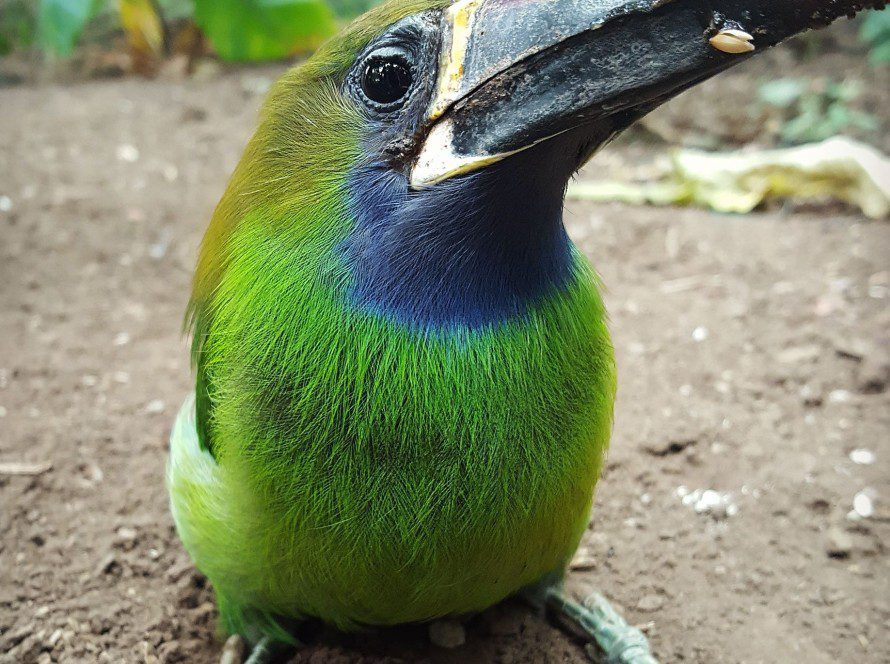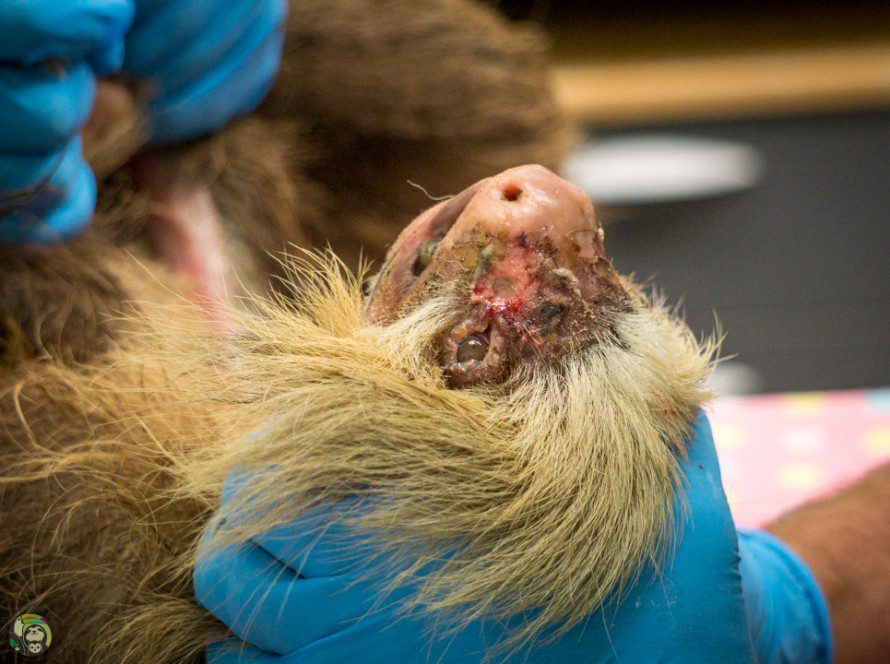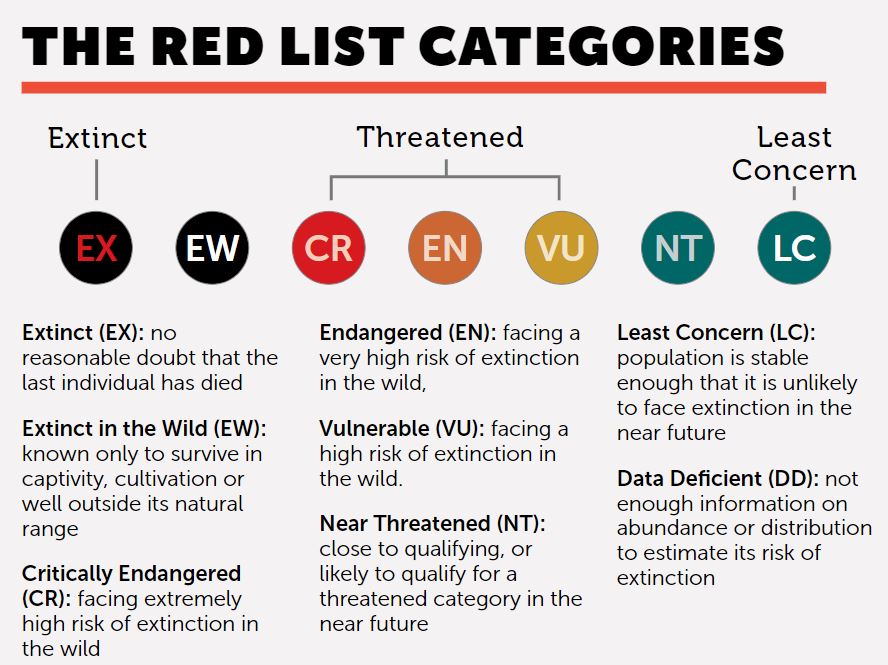
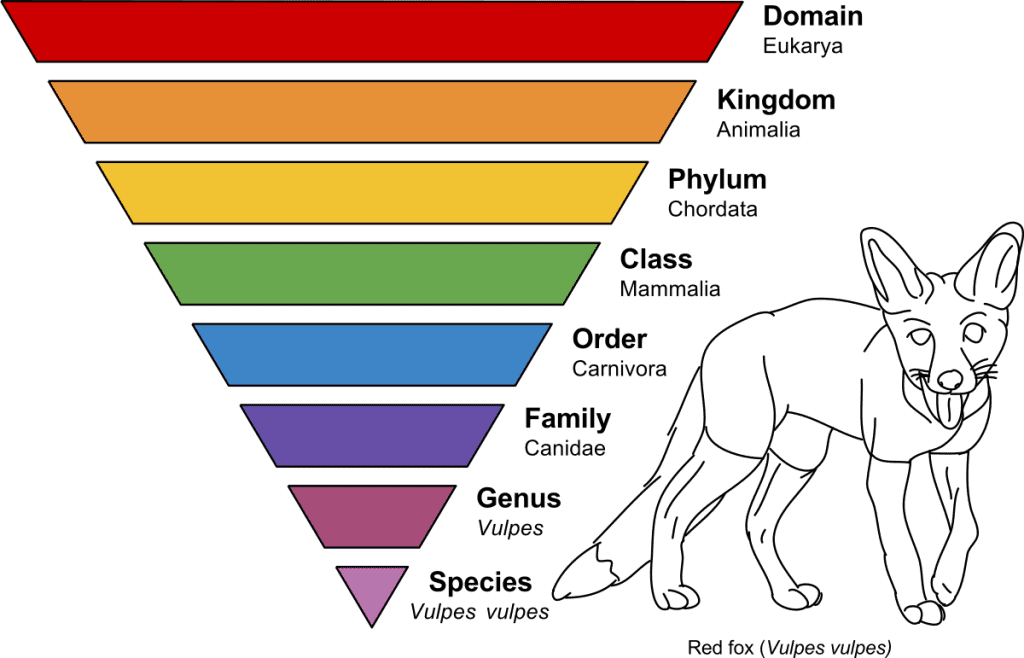
There are five criteria to consider, named from A to E. The criteria are the following:
-
- Population size reduction measured over the length of 10 years or three generations
- The decline of geographic range in number of appearances and area occupied
- Small population size in number of sexually mature individuals
- Very small or restricted population
- Quantitative analysis indicating the probability of extinction in the wild
A taxon is considered Vulnerable when the best available evidence indicates that it meets any of the criteria A to E, and is considered to be facing a high risk of extinction. Endangered and Critically endangered species must also fulfill the respective criteria, but with lower numbers, putting them at very high risk or extremely high risk of extinction.
Populations are considered extinct in the wild when it is known that the only populations of the species in question are found in a captive setting, with no wild populations contributing to the genetic diversity of the species. A subcategory exists as well, where species can be cataloged as presumed extinct in the wild. This has to do with exhaustive investigations on the historical and potential habitats of the species and coming up with no known individual. For a species that has been presumed extinct in the wild to become categorized as properly extinct in the wild, they must disappear from all surveys performed in the wild over the appropriate time frame relating to the species life cycle and life form.
A taxon is classified as extinct when there is no reasonable doubt that the last individual of its species has died. A taxon is presumed extinct when extensive surveys over the expected habitat of their finding have come up without finding a single individual and there is no record of the existence of the taxon in captivity.
Knowing the status of taxon is important not only to know its probabilities of extinction, but also its probabilities of survival. The list helps conservationists to educate themselves on the risks that their species of study is facing, how well their populations are faring and may give an insight on how to manage them best.
The other important tool at the disposal of conservationists and ecology aficionados around the world is the CITES Appendices. The convention on international trade in endangered species of wild fauna and flora is an international agreement between governments, with the goal of making sure that the international trade of species does not threaten their survival in the wild. Cites was first drafted in the 1960s as an important treaty, a first of its kind, dealing with the implications of the commercialization of wild species as well as products derived from them. In 1973 when the convention was first signed, 80 countries joined the treaty. Since then, over 180 countries have joined the convention. Places that have joined CITES are legally bound to implement the rules and normative described within the treaty, but can also build on top of them to create even more restrictive measures.
CITES works by controlling the international trade of species and their derivatives. This ensures that all exports, imports, re-exports, and introduction by the sea of the species covered by the convention have to be authorized through a licensing system. This is done by management authorities appointed by each country that has signed the treaty.
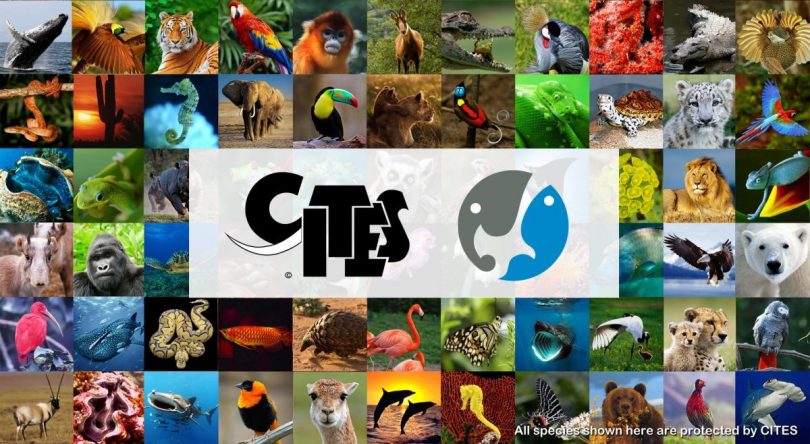
Happy World Environment Day! If you wish to know more about the animals at Toucan Rescue Ranch and our role in protecting species, please visit join us on social media or browse our website!
This blog was written by Andrés Sáenz Bräutigam. He is a veterinary medicine and geology student. He’s worked for the Toucan Rescue Ranch since 2014 as an animal caretaker and tour guide, he now works as a vet intern and Tour guide.



